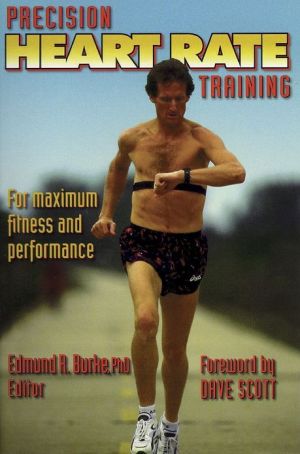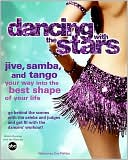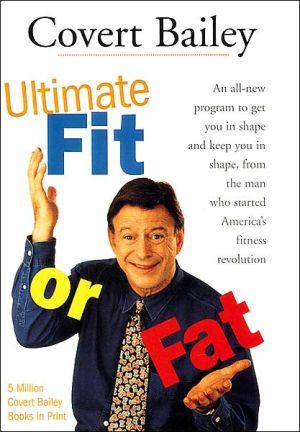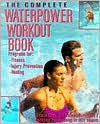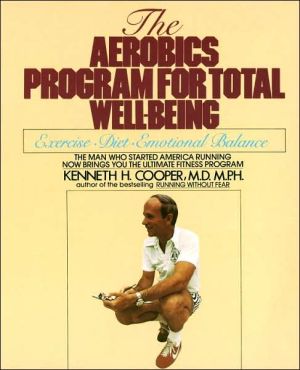Precision Heart Rate Training
Over the past 20 years, heart rate monitors (HRMs) have gained widespread popularity among fitness enthusiasts and elite athletes. These wireless devices monitor the body's levels of cardiovascular and physiological stress during exercise, so users can adjust their training intensity for the safest, most effective workouts.\ While more people are buying HRMs, few know how to maximize their use. Precision Heart Rate Training is the best, most complete resource for anyone who wants to use an...
Search in google:
Over the past 20 years, heart rate monitors (HRMs) have gained widespread popularity among fitness enthusiasts and elite athletes. These wireless devices monitor the body's levels of cardiovascular and physiological stress during exercise, so users can adjust their training intensity for the safest, most effective workouts.While more people are buying HRMs, few know how to maximize their use. Precision Heart Rate Training is the best, most complete resource for anyone who wants to use an HRM to get optimal results. Written by prominent authorities from a variety of sports and fitness activities and backed by Polar Electro, the leading manufacturer of HRMs, Precision Heart Rate Training fully explains why and how to train with a heart rate monitor. Editor Edmund R. Burke, a former Olympic coach who began working with HRMs in 1983, introduces the basic concepts of heart rate training. He explains how various factors affect heart rate during exercise, then presents several methods for establishing target heart rates. Burke also introduces the concept of training zones, or ways of describing training intensity, ranging from very light activity to training for improved performance. Using these zones as a framework, an all-star panel of experts explains how to design and use training programs for seven different sports and fitness activities:- Walking - Therese Iknoian - Running - Roy Benson - Cycling - Joe Friel- In-line Skating - Frank Fedel- Multisport Training - Tim Moore- Circuit Training - Wayne Westcott- Group Exercise - Jay BlahnikEach chapter contains training suggestions specific to the activity described, including how to find the optimal training intensity, design an effective training program, and adjust workout intensity, plus sample workouts or programs, or both. For those who want to develop an effective long-term training plan, Jim Dotter, founder of Biometrics, Inc., provides guidelines for setting up a measurable training system using HRMs and explains how to adjust the plan through the season. With HRMs, athletes and exercisers at every level can use high-tech biofeedback training to develop sophisticated programs for better performance. Precision Heart Rate Training shows them how to use today's training technology to their fullest advantage. Edward T. Howley This book summarizes the use of heart rate monitoring to achieve fitness and performance goals in a wide variety of exercises and sports. The purpose is to present the most current, definitive, and practical information on the use of heart rate monitors as aids in achieving health, fitness, and performance goals. This is accomplished by providing examples of how heart rate monitors may be used in a wide variety of exercise programs. The editor indicates that this book was written for health and fitness enthusiasts, athletes, and coaches. The contributors have been directly involved in the use of heart rate monitors in the various training programs presented. The first two chapters provide a general introduction into the use of heart rate monitoring in training. This is followed by seven chapters dealing with the use of heart rate monitors in walking, running, cycling, in-line skating, multisport, circuit, and group-exercise training. The last chapter focuses on the use of computer technology to help plan and track training programs. Most chapters provide a range of workouts to address participant needs from the low-end to the high-end of the fitness and performance scale. The book summarizes information on a wide variety of exercise modes that may be of interest to a reader wanting an overview on this topic. However, the reader needs to be aware that some contributors use the straight percentage of maximal heart rate method to calculate a "training heart rate zone" and others use the Karvonen (heart rate range) method. This can be confusing for those getting started in this area. The contributors are qualified to write in their respective areas, and the health-related fitnessinformation is consistent with current standards. The brief nature of each chapter limits the detail that can be provided on the various modes of training. However, most contributors refer to other books that provide extensive detail on a particular mode of training. In some chapters the emphasis on the "science" (or number-crunching aspect) of using heart rate data for training purposes takes away from the "art" (or common sense side) of an exercise prescription. The chapter on running programs provides an appropriate balance in this regard.
ForewordPrefaceAcknowledgmentsCh. 1Heart Rate Monitoring and Training1Ch. 2Better Training With Heart Rate Zones29Ch. 3Walking43Ch. 4Running65Ch. 5Cycling91Ch. 6In-Line Skating111Ch. 7Multisport Training131Ch. 8Circuit Training153Ch. 9Group Exercise169Ch. 10Monitoring the Training Effect189About the Contributors207About the Editor211
\ From The CriticsReviewer: Edward T. Howley, PhD(University of Texas El Paso College of Health Sciences)\ Description: This book summarizes the use of heart rate monitoring to achieve fitness and performance goals in a wide variety of exercises and sports.\ Purpose: The purpose is to present the most current, definitive, and practical information on the use of heart rate monitors as aids in achieving health, fitness, and performance goals. This is accomplished by providing examples of how heart rate monitors may be used in a wide variety of exercise programs.\ Audience: The editor indicates that this book was written for health and fitness enthusiasts, athletes, and coaches. The contributors have been directly involved in the use of heart rate monitors in the various training programs presented.\ Features: The first two chapters provide a general introduction into the use of heart rate monitoring in training. This is followed by seven chapters dealing with the use of heart rate monitors in walking, running, cycling, in-line skating, multisport, circuit, and group-exercise training. The last chapter focuses on the use of computer technology to help plan and track training programs. Most chapters provide a range of workouts to address participant needs from the low-end to the high-end of the fitness and performance scale. The book summarizes information on a wide variety of exercise modes that may be of interest to a reader wanting an overview on this topic. However, the reader needs to be aware that some contributors use the straight percentage of maximal heart rate method to calculate a "training heart rate zone" and others use the Karvonen (heart rate range) method. This can be confusing for those getting started in this area.\ Assessment: The contributors are qualified to write in their respective areas, and the health-related fitness information is consistent with current standards. The brief nature of each chapter limits the detail that can be provided on the various modes of training. However, most contributors refer to other books that provide extensive detail on a particular mode of training. In some chapters the emphasis on the "science" (or number-crunching aspect) of using heart rate data for training purposes takes away from the "art" (or common sense side) of an exercise prescription. The chapter on running programs provides an appropriate balance in this regard.\ \ \ \ \ Edward T. HowleyThis book summarizes the use of heart rate monitoring to achieve fitness and performance goals in a wide variety of exercises and sports. The purpose is to present the most current, definitive, and practical information on the use of heart rate monitors as aids in achieving health, fitness, and performance goals. This is accomplished by providing examples of how heart rate monitors may be used in a wide variety of exercise programs. The editor indicates that this book was written for health and fitness enthusiasts, athletes, and coaches. The contributors have been directly involved in the use of heart rate monitors in the various training programs presented. The first two chapters provide a general introduction into the use of heart rate monitoring in training. This is followed by seven chapters dealing with the use of heart rate monitors in walking, running, cycling, in-line skating, multisport, circuit, and group-exercise training. The last chapter focuses on the use of computer technology to help plan and track training programs. Most chapters provide a range of workouts to address participant needs from the low-end to the high-end of the fitness and performance scale. The book summarizes information on a wide variety of exercise modes that may be of interest to a reader wanting an overview on this topic. However, the reader needs to be aware that some contributors use the straight percentage of maximal heart rate method to calculate a "training heart rate zone" and others use the Karvonen (heart rate range) method. This can be confusing for those getting started in this area. The contributors are qualified to write in their respective areas, and the health-related fitnessinformation is consistent with current standards. The brief nature of each chapter limits the detail that can be provided on the various modes of training. However, most contributors refer to other books that provide extensive detail on a particular mode of training. In some chapters the emphasis on the "science" (or number-crunching aspect) of using heart rate data for training purposes takes away from the "art" (or common sense side) of an exercise prescription. The chapter on running programs provides an appropriate balance in this regard.\ \ \ 3 Stars from Doody\ \
